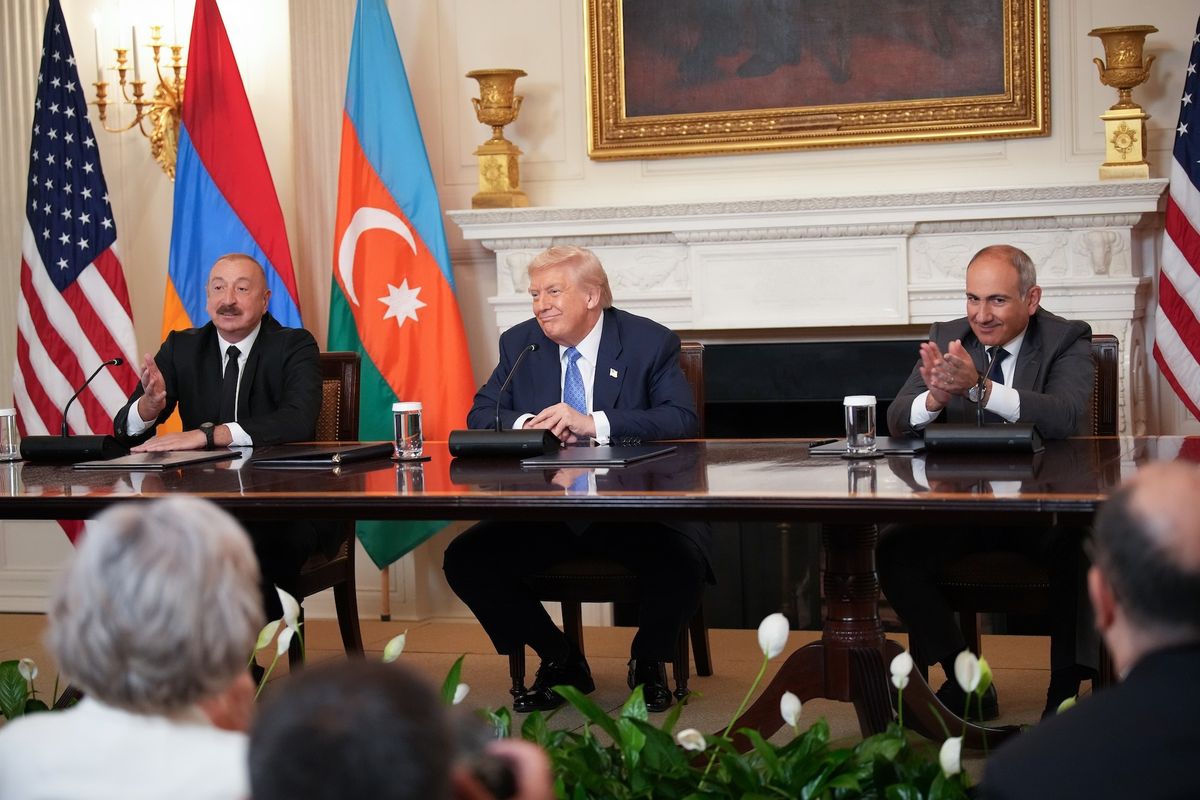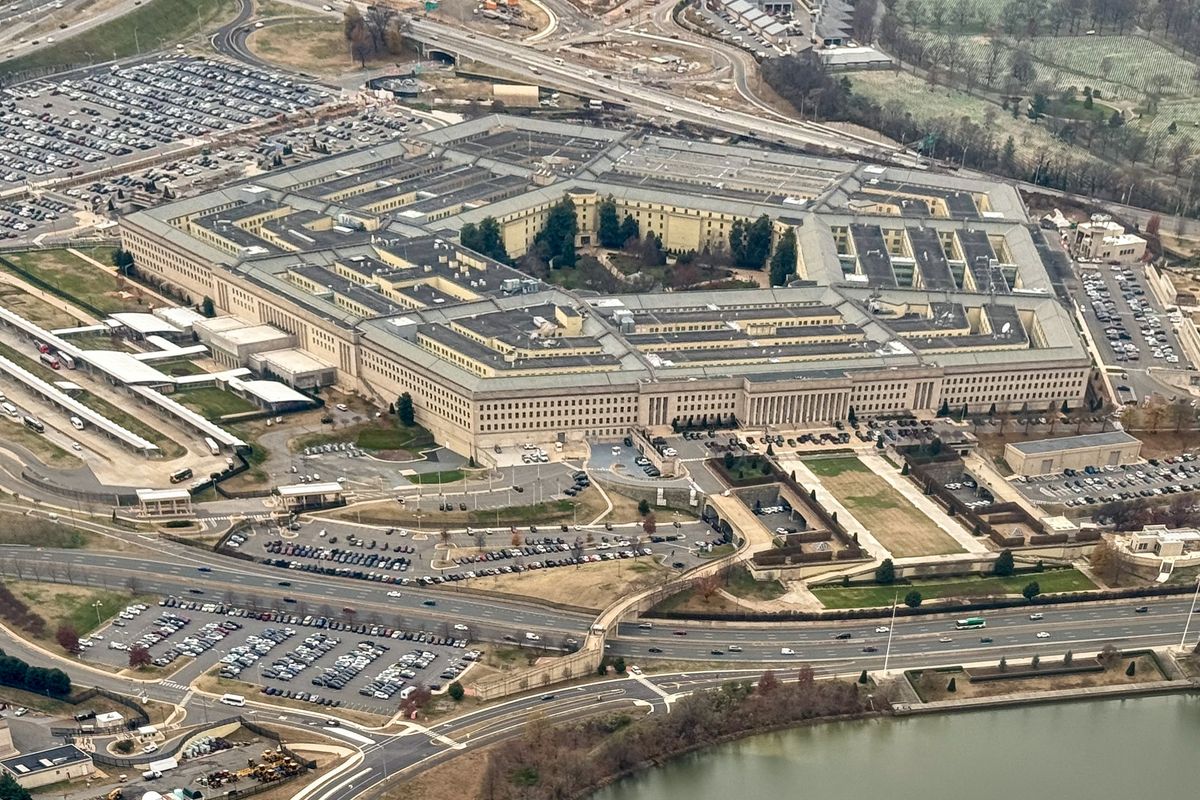From his spacious office overlooking the Potomac River, Lieutenant General Vincent Stewart has sweeping views of some of Washington D.C.’s iconic landmarks—the Washington Monument, the Jefferson Memorial, the Pentagon—symbols of the land he came to as a 13-year old back in 1971. He is Jamaican by birth, and once in America, he prospered in his new country, joining the United States Marine Corps after graduating from Western Illinois University and rising through the ranks to become a three-star general and the Director of the Defense Intelligence Agency (DIA).
The Cipher Brief recently sat down for an exclusive interview with Gen. Stewart in his DIA office at Joint Base Anacostia-Bolling to discuss his career, the DIA and what he sees as the threats facing the nation. Dressed in camouflage and boots, a relaxed Stewart was far more interested in talking about his agency and the people working there—who he referred to as his “heroes”—than about himself. “There’s nothing to talk about,” exclaimed Stewart. “I’ve survived for 35 years.” His secret to success? “I showed up, most of the time, on time and occasionally in the right uniform, and I didn’t implode.” But with some prodding, the married father of five children opened up a bit about how he ended up traveling down the intelligence road.
Stewart’s career path was unusual for a Marine. He began his service as an armor officer in a tank unit. Although he moved into a position as a signals intelligence officer—that is intelligence gathered from communications and information systems—there really wasn’t a development plan for intelligence professionals to reach the highest levels in their field, particularly all-source analysts. But that changed after Desert Storm, and by the mid 1990s, Stewart found himself “out in the front end” of the Marine Corps’ effort to find, assess, train, and grow intelligence professionals. Stewart believes his early experience as a platoon commander helped as he transitioned to the intelligence field.
“I bring an operational context to the intelligence business that helps our analysts, far more than being the uber analyst of DIA,” said Stewart. “So I think the leadership training from the Marine Corps, the operational experience—I’ve had the fortune or misfortune of doing a couple of operations in my lifetime—I think those are some unique characteristics I bring.” As the DIA Director, Stewart sees himself “as the guy who leads, sets the course of vision, maintains standards, is responsible for the soul of the agency, and then hires a bunch of uber analysts to do this job.”
Getting the right mix of operators, that is people who work in the field, and analysts is a priority for Stewart. “We have a lot of great analysts, a lot of great analysts who have had some limited operational experience, but I don’t think we have the right mix that I would like to see.” In the next year, Stewart plans to improve the mix, and he is looking for some help. “If I can convince some of my combatant commanders to let me borrow some of their operators so that we can have that operational flavor, I think it would be very helpful.”
Supporting those combatant commanders is job number one for the DIA. “My greatest measure of success is that I help a combatant commander see an event early enough so that he can set his forces and counter that event,” Stewart explained. “If I can help mitigate surprise, if I can help when they go into a conflict, and I can provide that additional depth of analysis that helps them to be successful and win the fight that they are in, and if in another combatant command I can help them deter conflict because of the depth of analysis, then to me that’s victory, that’s greatness for the agency.”
But Stewart is also keenly aware of who he ultimately answers to—the President. “He is customer number one that I should be helping to drive policy,” Stewart said. “But I’m a combat support agency. I am the Defense Intelligence all-source Agency. I have to be focused on defense. I think sometimes we’ve lost that. Let’s focus on understanding the adversary’s military capabilities so that we can prevent war. And if we can’t prevent war, let’s beat the stuffings out of anyone who comes against us.”
After 9/11, the intelligence community was criticized for not sharing information and failing to connect the dots that could have prevented the terrorist attacks. Stewart said that is all history. “We know each other, we like each other, we collaborate well with each other. We’re building an architecture, IC-ITE, that should continue to facilitate sharing information.” The DIA chief pointed to the recent North Korea missile test in which “everybody was talking…it was open, it was transparent. It’s a great case study of how we ought to be in this business.”
Stewart is focused on what he calls the “big five, no fail missions.” They include: trans-regional threats; a resurgent Russia; a modernizing, more aggressive China; North Korea’s belligerent behavior; and the role Iran will play now that the sanctions over its nuclear program have ended. “All my intel resources line up from there, how I structure the organization lines up from there, where I invest lines up from there. Everything is built around those five, “no fail” missions.”
And it’s not just the missions, but also the five different domains: space, cyber, air, land and sea. “I have five domains that I need to think about and be able to win in all those domains. All those domains are contested domains,” Stewart said. “I’ve got to have really well thought through structures, otherwise I’ll always be shooting behind the target, and we’re going to try not to do that.”
Those missions and domains require considerable resources. Is Congress and the executive branch providing sufficient funding? Stewart danced around his answer a bit. “I owe them (policymakers) a very clear appreciation of what I have been asked to do… Here are the resources that I have. I can’t do it all. I’m going to take risk in these areas. I’m going to mitigate the risk by doing something, maybe with a partner. And then I’m going to come back to you periodically and say, ‘we did ok but it was close, or we really missed because you said it was ok to take that risk and country X imploded. I wasn’t looking for that.’ We’ve got to do a much more precise job of laying that landscape out... So I’m going to try and get closer to that next year.”
One of his greatest resources is his workforce. “I came into this organization knowing that we had a really talented workforce, and I’m energized by that workforce,” Stewart said. Of the 16,500 employees at DIA, 74 percent of them are civilians, a big turnaround from the pre 9/11 days when the military overwhelmingly outnumbered civilians. But the terrorist attacks led leadership to build a more robust civilian workforce. “We sometimes look at them and think, good grief, these guys aren’t in uniform,” Stewart said. “They are as patriotic and service driven as any organization I’ve been around.”
The DIA director also takes pride in the diversity of his workforce. “They are not quite there yet, but in another year, maybe even six months,” Stewart said, “my leadership demographics will look about right. I’ll have the right mix of women, different ethnic groups. If I can get that leadership team to look a lot more diverse and empower them to find the next person like them, put them in the right jobs, sponsor them, mentor them and create opportunities for them, I think over the next few years you’ll see a much more diverse, stable workforce.”
Finding the right balance of cultural and language experience is a bit trickier. The intelligence community as a whole has struggled to find first generation Americans and other people with the appropriate skills in the critical threat areas. The DIA is no different. Stewart said part of the problem is that the targets change. “Today it’s Russia, we’ll surge and build the language capability. And five years from now, it’s like, oh, Russia is not the enemy, we need Chinese - and we’ll surge for that. And then it’s not Chinese, it’s Farsi.”
And that dynamic goes beyond language capabilities. Stewart lamented that the world doesn’t stand still for him—one day it’s Russia engaging militarily in Syria and the next day it’s North Korea launching a missile—all of which impacts how he balances resources. “The dynamic changes. But I want to stabilize it as much as possible so I’m not chasing the soccer ball. If I can align the resources, build the capacity, and build depth on the bench, then I can deal with things.”
And on the days when he is feeling down, what does he do? “I go down to the cafeteria and I talk to the work force, and I come back and I’m fired up. I’m ready to take on the world. There is just so much energy from these guys. And they want to be great - they don’t want to be average. They want to be great. I sit down at lunch and start talking to these young men and women, and they’re like, ‘lets go get them!’ That fires me up.”
Bottom line for Lt. Gen. Stewart: “The heroes are inside this organization.”
As Stewart’s military career winds down, the general seems as though he wants to walk into the sunset. “I’m going to put on my dress blues. I’m going to start walking west and when I get to some town where they go, ‘what’s this that you’re wearing?’ I’ll know that’s where I’ll stop.” And what would he do there? “Sell pencils,” he said with a huge smile, but added, “I don’t know if it will put food on the table.” However, it doesn’t appear that his appetite for serving his nation is going to diminish anytime soon.












